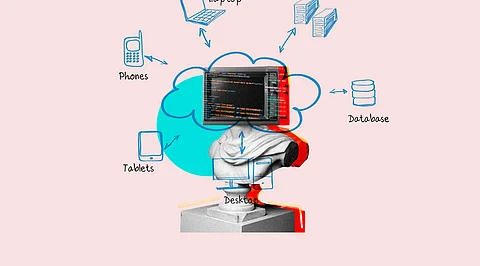

In the era of data-driven decision-making, the complexities of managing, processing, and transforming data have spurred a technological evolution. Enter serverless data integration—a revolutionary approach that will streamline these intricate processes.
This comprehensive guide begins an illuminating journey into serverless data integration, demystifying its intricacies and unveiling its profound implications. From deciphering the essence of serverless architecture to understanding its impact on data management, processing, transformation, and insights, we delve into a realm where traditional constraints dissolve, paving the way for a more agile, efficient, and insightful data-driven landscape in the modern enterprise. Join us as we unravel the power of serverless data integration and its potential to reshape how businesses harness data's essence.
At its core, serverless data integration is a methodology where the traditional notion of managing and provisioning servers is eliminated. Instead, computing resources are abstracted away, allowing developers and data engineers to focus solely on data transformation, movement, and integration. This approach leverages cloud services, such as serverless functions, to process and move data seamlessly, minimizing the need for manual infrastructure management.
Scalability and Flexibility: Serverless data integration empowers organizations to handle varying workloads effortlessly. The cloud provider automatically scales resources up or down based on demand, ensuring optimal performance and cost-efficiency.
Cost Optimization: With serverless architectures, organizations pay only for the computing resources they use during data processing tasks. This eliminates the need for provisioning and maintaining idle resources, resulting in cost savings.
Simplified Management: By abstracting away the complexities of server management, serverless data integration reduces operational overhead. Developers can focus on designing effective data pipelines without worrying about infrastructure maintenance.
Rapid Development: Serverless platforms provide pre-built components and connectors for various data sources, accelerating the development of data integration workflows.
Real-time Processing: Serverless data integration enables real-time data processing, making it suitable for applications that require timely insights and actions based on incoming data.
Serverless Data Integration in Action: Consider an e-commerce company aiming to enhance its customer experience through personalized recommendations. The company collects data from various sources, including user behavior on the website, purchase history, and social media interactions. With serverless data integration, the company can effortlessly process, cleanse, and combine this diverse data to create comprehensive customer profiles.
Using serverless functions, the company can trigger data integration workflows whenever new data arrives. These functions transform and enrich the data before seamlessly delivering it to analytical systems for further insights. This process is orchestrated without manual intervention or complex infrastructure management.
Challenges to Consider: While serverless data integration offers numerous benefits, it's essential to acknowledge potential challenges:
Vendor Lock-in: Adopting a specific cloud provider's serverless platform could lead to vendor lock-in, making it challenging to migrate to a different provider.
Cold Start Latency: Serverless functions might experience latency when invoked for the first time after a period of inactivity, impacting real-time processing.
Complexity in Debugging: Serverless workflows can be challenging due to their distributed and event-driven nature.
Resource Limitations: Serverless functions have resource limits, and certain complex data integration tasks might require more resources than allowed.
Choosing the Right Approach: Serverless data integration is a powerful solution, but its suitability depends on the organization's needs, existing infrastructure, and data integration requirements. Businesses must evaluate data volume, processing speed, and available resources before adopting a serverless approach.
Furthermore, the availability of resources, both in terms of human expertise and computational power, must not be underestimated. While serverless architectures abstract infrastructure management, having a team proficient in serverless technologies can maximize the benefits and navigate potential challenges seamlessly.
Join our WhatsApp Channel to get the latest news, exclusives and videos on WhatsApp
_____________
Disclaimer: Analytics Insight does not provide financial advice or guidance. Also note that the cryptocurrencies mentioned/listed on the website could potentially be scams, i.e. designed to induce you to invest financial resources that may be lost forever and not be recoverable once investments are made. You are responsible for conducting your own research (DYOR) before making any investments. Read more here.
